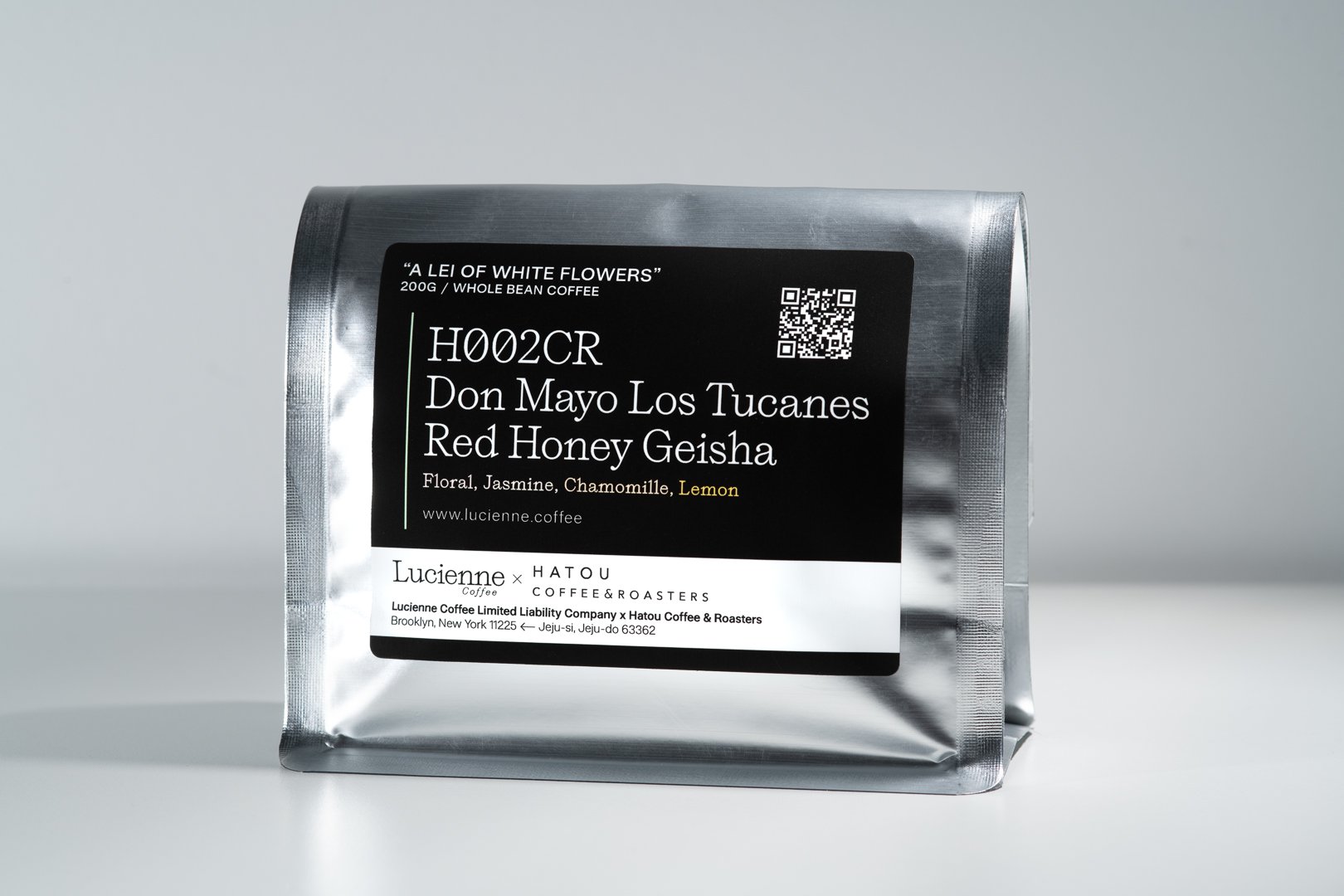 Image 1 of 2
Image 1 of 2

 Image 2 of 2
Image 2 of 2



Don Mayo Los Tucanes Red Honey Geisha
Josh’s notes:
Smells lovely and floral like a white flower lei. To be more specific, in Hawaii we like to pick up leis at the airport lei stands for our friends and family flying in....and then sometimes we'd leave a lei hanging on the rear view mirror just to make the car smell amazing. Over time those flowers would dry out in the hot car and sun, and start to make the car smell even better. That's what I think this coffee smells and tastes like. Its floral (but not delicate) with a mild lemon acidity. One of my favorites.
No stranger to winning COE awards nearly every year, Finca Los Tucanes can grow a mean geisha for sure. The high elevation of the Tarrazu region, along with its mountainous terrain, provides ideal growing conditions for coffee. This, paired with the Bonilla family's dedication to growing excellence is reflected in their continuous top placements in the competition, a showcase of their hard work and commitment to quality coffee production.
Process:
Honey processing is usually performed in a micromilling machine, also called a demucilager. The machine removes the coffee cherry's outer skin and then, using an intense spray mist, shaves away small amounts of mucilage - the fruit's flesh. The amount of mucilage that remains will ferment in place before the fruit is spread out on tables to dry. It will determine the final color and name given to the coffee. A tiny amount of mucilage will result in "whilte honey", a little more for yellow honey, than red honey and finally, with pretty much all of the mucilage intact is black honey. Red honey is a nice balance between fruitiness and piquancy.
Roast:
Roasted light and spectacularly by our friends at Hatou Coffee and Roasters in Jeju, South Korea, rested for 7 days, then vacuum packed and frozen for long term storage.
Josh’s notes:
Smells lovely and floral like a white flower lei. To be more specific, in Hawaii we like to pick up leis at the airport lei stands for our friends and family flying in....and then sometimes we'd leave a lei hanging on the rear view mirror just to make the car smell amazing. Over time those flowers would dry out in the hot car and sun, and start to make the car smell even better. That's what I think this coffee smells and tastes like. Its floral (but not delicate) with a mild lemon acidity. One of my favorites.
No stranger to winning COE awards nearly every year, Finca Los Tucanes can grow a mean geisha for sure. The high elevation of the Tarrazu region, along with its mountainous terrain, provides ideal growing conditions for coffee. This, paired with the Bonilla family's dedication to growing excellence is reflected in their continuous top placements in the competition, a showcase of their hard work and commitment to quality coffee production.
Process:
Honey processing is usually performed in a micromilling machine, also called a demucilager. The machine removes the coffee cherry's outer skin and then, using an intense spray mist, shaves away small amounts of mucilage - the fruit's flesh. The amount of mucilage that remains will ferment in place before the fruit is spread out on tables to dry. It will determine the final color and name given to the coffee. A tiny amount of mucilage will result in "whilte honey", a little more for yellow honey, than red honey and finally, with pretty much all of the mucilage intact is black honey. Red honey is a nice balance between fruitiness and piquancy.
Roast:
Roasted light and spectacularly by our friends at Hatou Coffee and Roasters in Jeju, South Korea, rested for 7 days, then vacuum packed and frozen for long term storage.
Josh’s notes:
Smells lovely and floral like a white flower lei. To be more specific, in Hawaii we like to pick up leis at the airport lei stands for our friends and family flying in....and then sometimes we'd leave a lei hanging on the rear view mirror just to make the car smell amazing. Over time those flowers would dry out in the hot car and sun, and start to make the car smell even better. That's what I think this coffee smells and tastes like. Its floral (but not delicate) with a mild lemon acidity. One of my favorites.
No stranger to winning COE awards nearly every year, Finca Los Tucanes can grow a mean geisha for sure. The high elevation of the Tarrazu region, along with its mountainous terrain, provides ideal growing conditions for coffee. This, paired with the Bonilla family's dedication to growing excellence is reflected in their continuous top placements in the competition, a showcase of their hard work and commitment to quality coffee production.
Process:
Honey processing is usually performed in a micromilling machine, also called a demucilager. The machine removes the coffee cherry's outer skin and then, using an intense spray mist, shaves away small amounts of mucilage - the fruit's flesh. The amount of mucilage that remains will ferment in place before the fruit is spread out on tables to dry. It will determine the final color and name given to the coffee. A tiny amount of mucilage will result in "whilte honey", a little more for yellow honey, than red honey and finally, with pretty much all of the mucilage intact is black honey. Red honey is a nice balance between fruitiness and piquancy.
Roast:
Roasted light and spectacularly by our friends at Hatou Coffee and Roasters in Jeju, South Korea, rested for 7 days, then vacuum packed and frozen for long term storage.
Roast Level
Varietal
Origin
Region
Farm
Farmer
Altitude
Processing
Drying Method
Roaster
Light ••••• Dark
Geisha
Costa Rica
San Francisco de León Cortés
Los Tucanes
Don Hector Bonilla
1800 MASL
Red Honey
Natural
Hatou | Jeju, Korea
